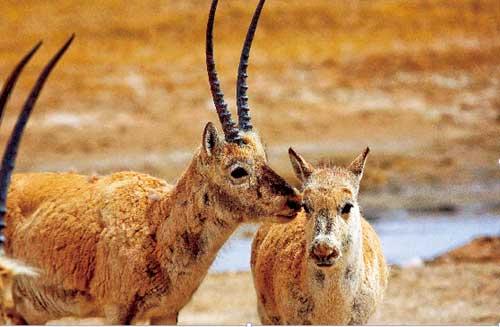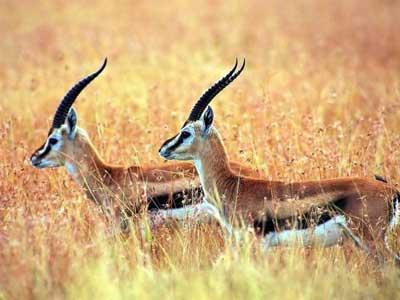| Videos | ? Latest |
|
? Feature | ? Sports | ? Your Videos |
Zonag Lake: Safe haven for abandoned baby antelopes

 0 Comment(s)
0 Comment(s) Print
Print E-mail
CNTV, July 3, 2011
E-mail
CNTV, July 3, 2011
|
|
| The Zonag Lake nature reserve is equipped with supervision facilities which allow staff and volunteers to observe the birthing process and the early life of the newborn antelopes. |
As birthing season reaches its peak, tens of thousands of pregnant antelopes are gathering around Zonag Lake in northwest China's Qinghai Province.
The Zonag Lake nature reserve is equipped with supervision facilities which allow staff and volunteers to observe the birthing process and the early life of the newborn antelopes. But, they also have another important task: Saving the lives of abandoned baby antelopes.
With the arrival of birthing season, mother antelopes face many challenges. Due to the vulnerable state of the antelope while giving birth, they are particularly sensitive to the dangers posed by illegal poachers and natural predators. Some of the mother antelopes will abandon their own babies if they are frightened or attacked. For these baby antelopes, harsh weather conditions and lack of food quickly become major threats to their survival.
The Zonag Lake protection site is equipped with the latest technology, including telescopes, cameras, and other machines for keeping a close eye on the antelope. Every day, staff members sit in front of the computer and use the cameras to supervise the birthing conditions of the mother antelopes and search for the abandoned baby antelopes. So far for this season, the team have managed to rescue three abandoned baby antelopes.
Staff Memver, Zonag Lake Protection Site, said, "From the cameras, I found a mother antelope being followed by two baby antelopes. But it seemed that the first baby antelope was being ignored by its mother. The mother antelope began eating grass. If that baby antelope has been abandoned, we have to rescue it otherwise it will die soon. We should keep an eye on it."
In order to make sure the baby antelope has been abandoned, the staff members use a high-powered telescope. Normally, a mother antelope will have only one baby. It is extremely unusual to see a mother antelope feed two babies together, as they generally don't have enough milk for more than one offspring. Without enough milk, the young antelope won't live long. The staff members watch the baby antelope for a whole day, and find whether it is alone with no mother to look after it. After devising a rescue plan, the staff decide to help the poor baby antelope in the evening, without disturbing other any of the mother antelopes who are giving birth.
|
|
| The Zonag Lake nature reserve is equipped with supervision facilities which allow staff and volunteers to observe the birthing process and the early life of the newborn antelopes. |
In the dark, the staff members finally find the dying baby antelope, covered with bruises. They are immediately worried about his condition.
"From the cameras, I found a mother antelope being followed by two baby antelopes. But it seemed that the first baby antelope was being ignored by its mother. "It seems this baby antelope did not have any milk this afternoon. It was almost dying when we found it."
The protection site become busy after the arrival of the baby antelope. Some are cooking milk, some are making medicine. But the poor baby antelope is no longer strong enough to suckle. The staff members decided to feed it mouth-to-mouth. Gradually, the condition of the baby antelope becomes stable.
"From the cameras, I found a mother antelope being followed by two baby antelopes. But it seemed that the first baby antelope was being ignored by its mother. "We will try our best to save those abandoned antelopes. We are very relieved and happy if we can save them. To us, they are like our kids. It is always good to see them recovered and playing around again."
The Zonag Lake protection site is located in the Hoh Xil nature reserve. It's the first permanent protection site to be established there. Positioned at an important location for the antelopes' life cycle, it plays an important role in protecting the creatures from illegal poachers and other predators. The protection site was built with environment-friendly materials, with detachable steel fences. The color scheme allows constant heat inside, and the natural rock color helps it to blend in with the surrounding environment.







